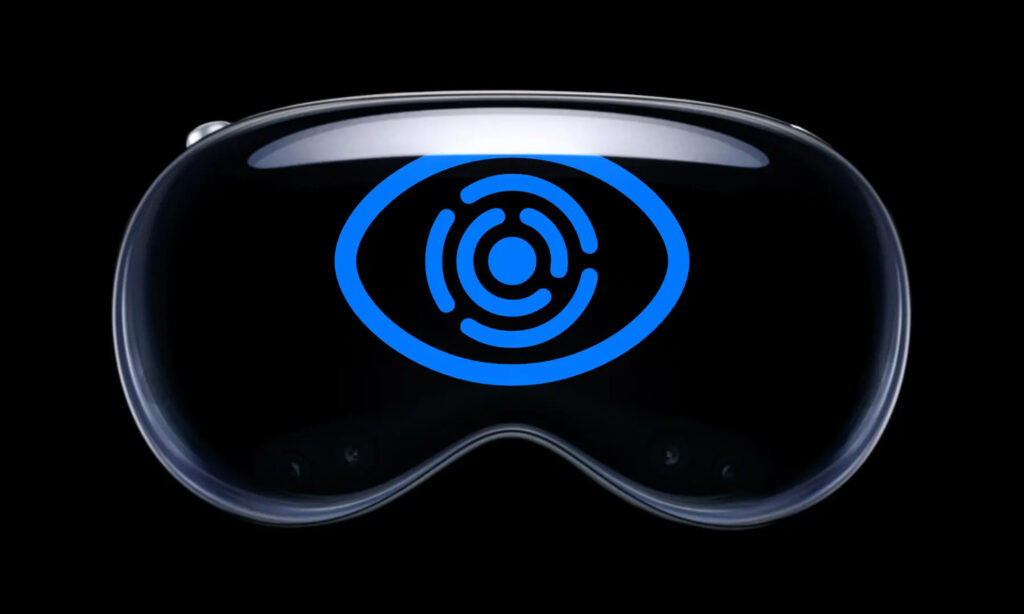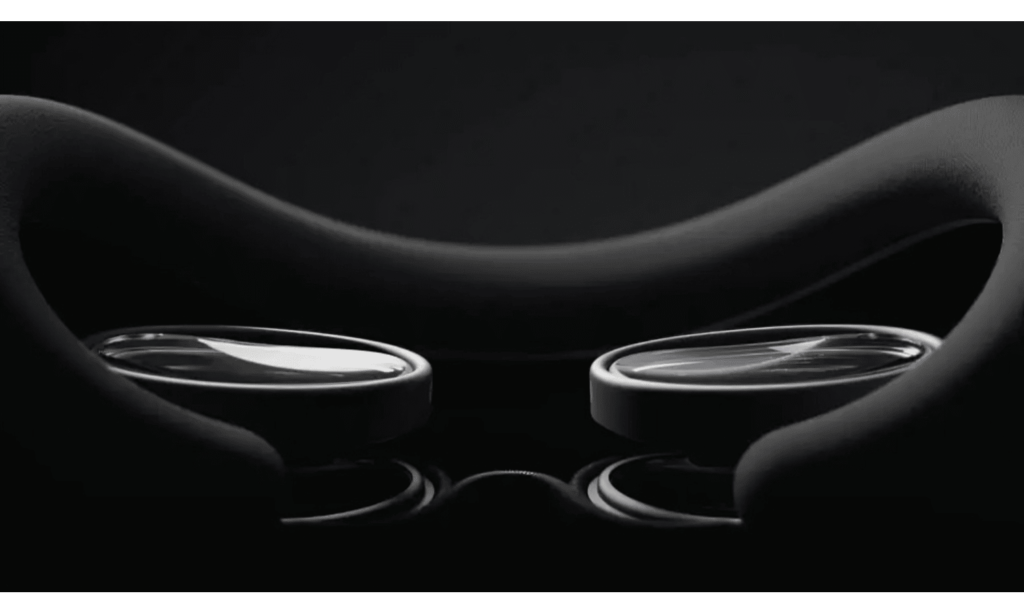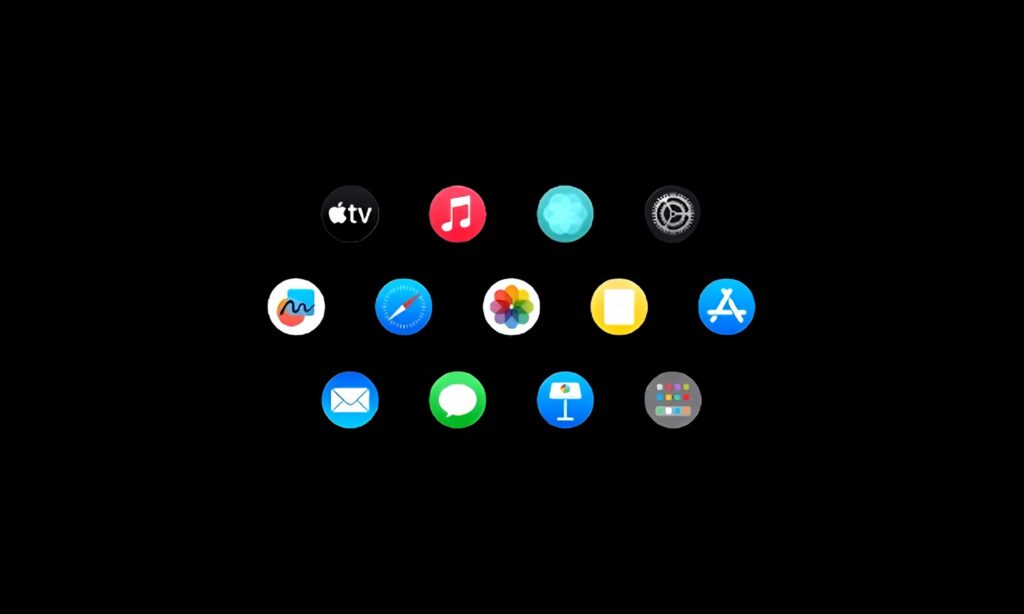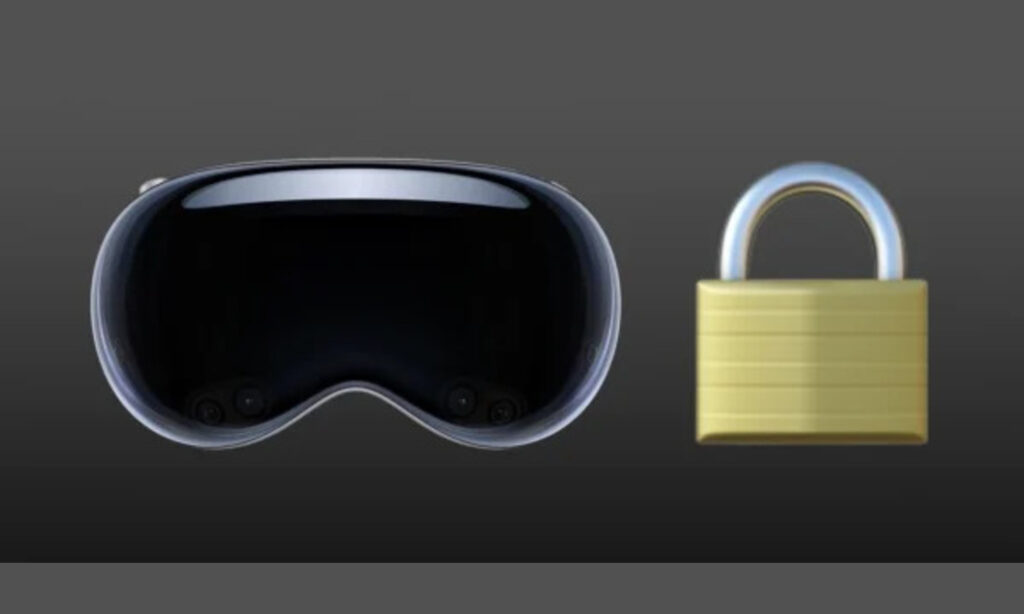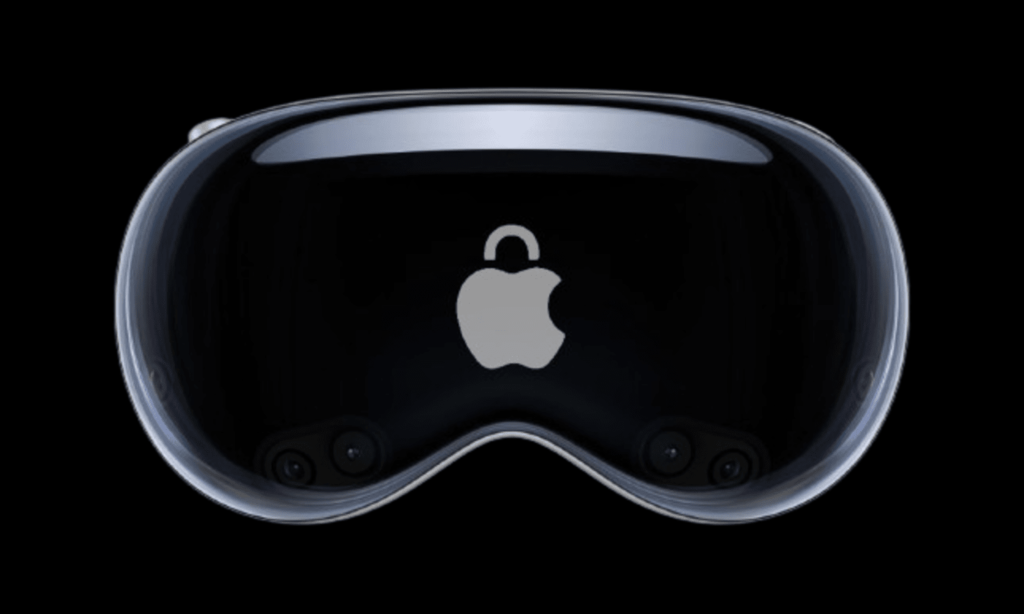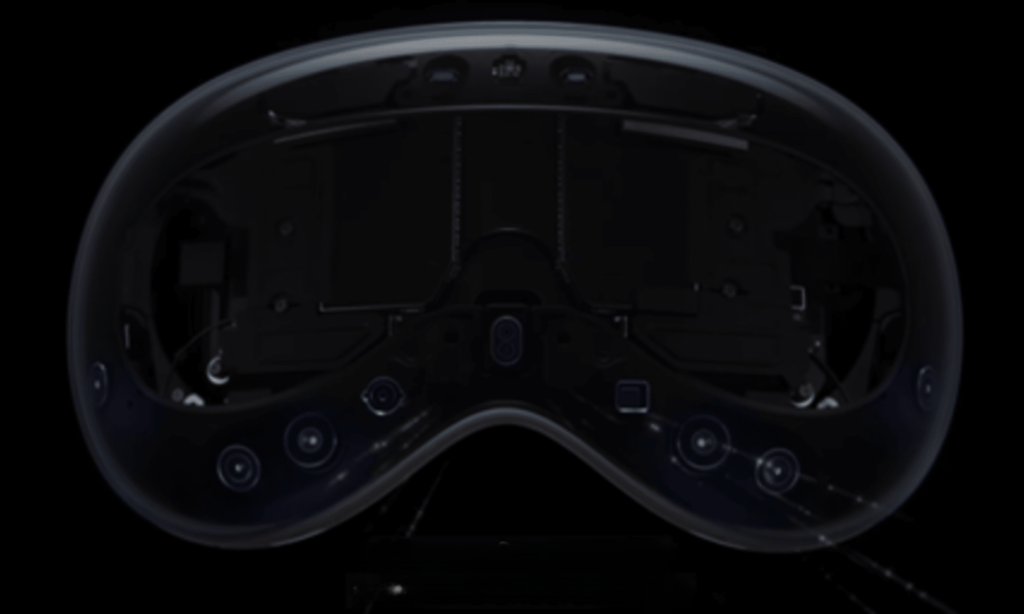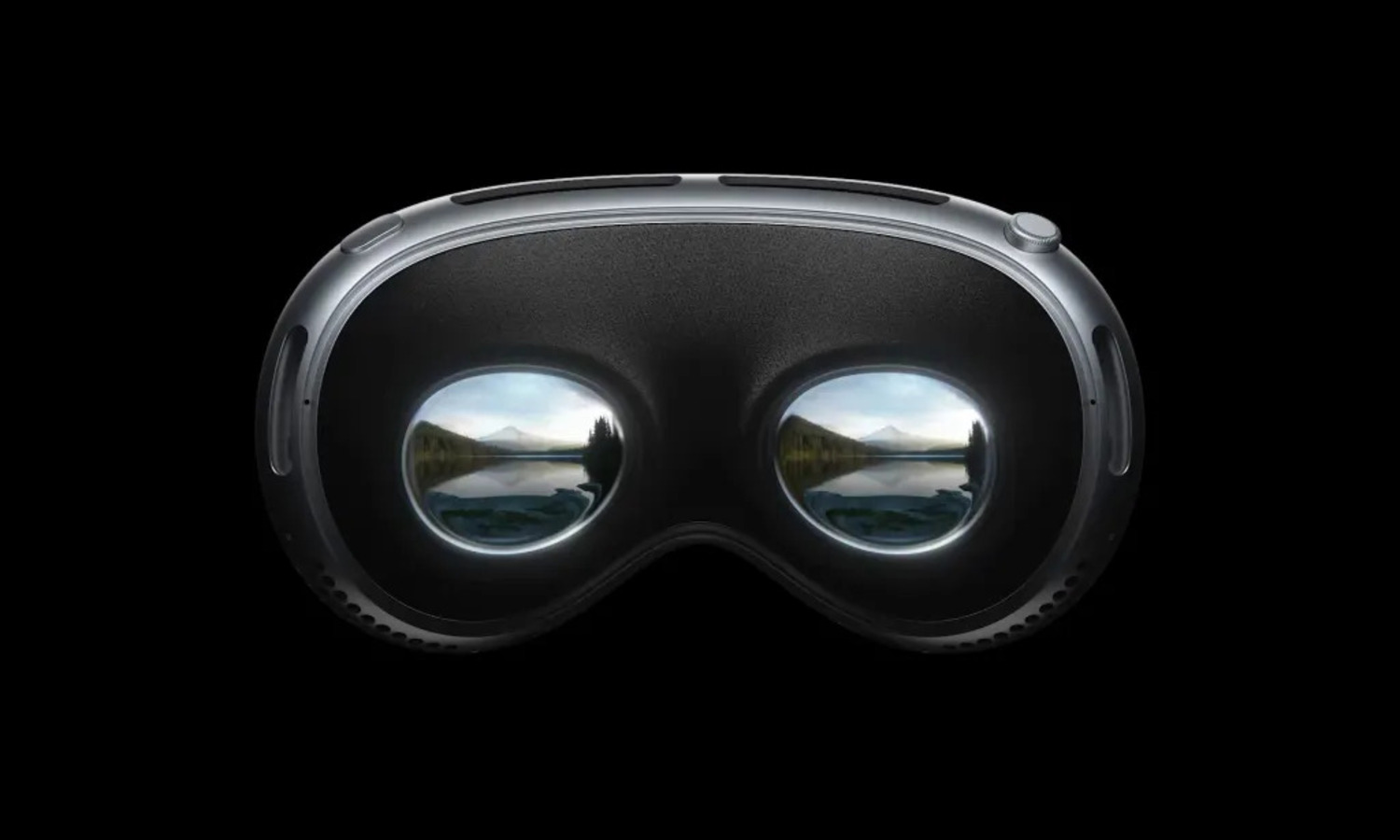In the age of immersive computing and augmented reality, the Apple Vision Pro’s display technology establishes a new benchmark for visual quality and innovation. The device with its superior OLED display, True Tone technology, and ProMotion technology, provides a fascinating viewing experience that captures the senses and transports viewers into a world of unprecedented realism and immersion. In this thorough examination, we go deep into the complexities of its display technology, unraveling its features, functions, and advanced specifications that make it a true masterpiece of visual engineering.
Understanding Display Technology:
The device display technology consists of a variety of hardware and software components designed to present material with amazing clarity, color accuracy, and responsiveness. From the high-resolution OLED screen to the powerful image processing algorithms, every component of the display system has been precisely designed to provide an unrivaled visual experience that delights and inspires.
As previously discussed it uses micro-OLED technology. Here’s an explanation of what this means:
A Display Powerhouse:
Micro-OLED is a cutting-edge display technology that enhances the capabilities of regular OLED (Organic Light-Emitting Diode) displays while providing various advantages used in most smartphones and televisions. Unlike regular OLED displays, which use a backlight to illuminate the pixels, micro-OLED displays use self-illuminating pixels. Each pixel in a micro-OLED display produces its light, eliminating the need for a separate backlight layer. This fundamental difference enables a variety of advantages. Here’s what makes it stand out:
- Superior Black Levels and Contrast Ratios: Because micro-OLED displays do not need a backlight, they may provide true black levels. Even when a pixel is turned off in typical OLED displays, some brightness may leak through, producing a grayish black rather than a deep, inky black. Micro-OLED displays eliminate this problem, resulting in higher contrast ratios. Consider viewing a movie with the Apple Vision Pro dark areas will appear extremely realistic, with crisp contrasts between light and shadow aspects, resulting in a genuinely immersive cinematic experience.
- High Color Fidelity and Vibrant Visuals: These displays can produce a wider color spectrum than regular OLED panels. This results in a richer, more complex color pallet. Visuals in the device will appear extremely lifelike, with colors that are both accurate and appealing. Imagine exploring a virtual world filled with rich landscapes or intricate works of art, the micro-OLED display will reproduce every detail with astonishing clarity and color.
- Thinner and Lighter Displays: The absence of a backlight layer in micro-OLED displays makes them substantially thinner and lighter than regular OLED panels. This is a significant advantage for applications like virtual reality headsets, where weight and size are critical considerations influencing user comfort. The immersive device, with its micro-OLED display technology, can be worn for long periods without creating neck pain or tiredness.
- Self-Illuminating Pixels: Like OLED displays, micro-OLED screens do not require a backlight. Each pixel generates its light, giving excellent black levels and contrast ratios. This translates to extremely deep blacks and bright colors, resulting in a breathtaking visual experience with the device.
- Smaller and Lighter: Micro-OLED screens are much thinner and lighter than conventional OLED panels. This is because they do not require a separate backlight layer, making them perfect for applications such as virtual reality headsets, where weight and size are important variables in user experience.
- High Resolution and Fast Response Times: Micro-OLED displays provide high resolution and extremely fast response times. This translates to sharp images and smooth motion handling, all of which are required for a seamless and engaging mixed-reality experience within the smart device.
Several factors likely contributed to Apple’s decision to use micro-OLED technology for the device:
- Superior Visual Quality: As previously stated, micro-OLED provides better image quality than regular OLED panels. This is critical for producing a realistic and engaging mixed-reality experience in which consumers anticipate as clean and sharp images as possible.
- Reduced Form Factor: The lightweight and tiny characteristics of micro-OLED screens enable Apple to create a VR headset that is comfortable to wear for extended periods, giving it a substantial edge over larger VR headsets.
- Fast Response Times: Micro-OLED displays’ fast response times reduce motion blur and provide a smooth and comfortable viewing experience, especially during high-paced virtual activities within smart technology.
While micro-OLEDs have several advantages, it is crucial to note that this technology is still very new and expensive to manufacture. This is undoubtedly one of the reasons behind the Apple Vision Pro’s high price. Its display technology is always changing. Future incarnations of the device could provide better resolutions, a wider color gamut, and potentially reduced production costs.
How Displays Work in Apple Vision Pro:
The Apple Vision Pro boasts a cutting-edge OLED display that blends cutting-edge technology with precision engineering to provide great image quality and performance. OLED, or Organic Light-Emitting Diode, technology provides several significant benefits over standard LCD screens, including:
- Pixel-Level Lighting: One of the primary advantages of OLED technology is its pixel-level illumination capability. Each pixel in the Apple Vision Pro may be turned on or off independently, providing precise control over brightness and contrast. This allows the display to reach true blacks by turning off all pixels in dark portions of the image, resulting in higher contrast and richer colors.
- Wide Color Gamut: The Apple Vision Pro’s display has a large color gamut, meaning it can reproduce a wide variety of colors with great precision and fidelity. This means that images and movies appear more lifelike and faithful to their original content, with brilliant colors and complex gradients that improve the viewing experience.
- High Contrast Ratio: The Apple Vision Pro’s OLED display, with pixel-level illumination and an infinite contrast ratio, provides outstanding contrast and clarity, with fine details and deep shadows that improve the viewing experience and bring material to life.
- True Tone Technology: True Tone technology is a feature that dynamically adjusts the display’s color temperature based on ambient lighting conditions. Advanced sensors in the Apple Vision Pro detect the color temperature of the surrounding environment and adapt the display to provide consistent color accuracy and white balance. This guarantees that colors look natural and true regardless of lighting conditions.
- ProMotion Technology: Apple Vision Pro’s display also has ProMotion technology. This technology allows the display to dynamically modify its refresh rate based on the material being watched, which ranges from 24Hz to 120Hz. A faster refresh rate produces smoother action with less motion blur, making the display excellent for gaming, entertainment, and augmented reality applications.
- OLED Technology: The Apple Vision Pro’s display uses OLED (Organic Light-Emitting Diode) technology, which provides various advantages over regular LCD screens. Each pixel in an OLED display emits its light, allowing for precise control over brightness and color. This results in deeper blacks, higher contrast ratios, and more brilliant colors when compared to LCD screens.
Advanced Features of Display Technology in Apple Vision Pro:
- HDR Support: Apple Vision Pro’s display supports High Dynamic Range (HDR) content, including Dolby Vision and HDR10. HDR improves the display’s contrast, brightness, and color depth, resulting in more lifelike images and videos with richer detail in both the highlights and shadows. This leads to a more immersive and visually appealing viewing experience.
- Dolby Vision and HDR10: The Apple Vision Pro supports both Dolby Vision and HDR10, two popular HDR formats used in streaming services, Blu-ray discs, and other media. This allows viewers to watch a diverse range of HDR material with exceptional visual integrity and realism.
- Adaptive Display Technology: The Apple Vision Pro’s display uses adaptive display technology, which dynamically adapts display settings based on the content being seen and the user’s preferences. This offers the best image quality and color fidelity over a wide range of viewing settings, from poorly lit rooms to bright outdoor environments.
- Night Shift: Night Shift is a feature that automatically adjusts the display’s color temperature to limit blue light exposure during nighttime use. By changing the display to warmer tones, Night Shift promotes better sleep hygiene and decreases eye strain, making it easier to unwind and relax before bedtime.
Standout feature of the device:
- High Resolution: The Apple Vision Pro’s display has a high resolution, allowing users to view clear, detailed images for an immersive experience. While the actual resolution varies depending on the device’s model and generation, Apple normally uses industry-leading display technology to provide sharp lettering, brilliant colors, and lifelike visuals.
- Pixel Density: Pixel density is the number of pixels per inch (PPI) on a display. Higher pixel density produces crisper images and text because individual pixels are smaller and more closely packed. The Apple Vision Pro has a high pixel density, which means that the material is displayed with remarkable clarity and detail, even when seen up close.
- Wide Viewing Angles: The Apple Vision Pro display has wide viewing angles, allowing users to enjoy consistent image quality and color accuracy from a variety of viewing positions. Whether viewing the display directly or from an angle, users can anticipate brilliant colors and fine details with no loss of quality or distortion.
- Antireflective Coating: The Apple Vision Pro’s display has an anti-reflective coating, which reduces glare and reflections for better visibility, particularly in bright outdoor conditions. This coating reduces distractions and improves the overall viewing experience by ensuring that the material is clear and legible even under difficult lighting circumstances.
- Scratch-Resistant Glass: To protect the display from scratches and damage, the Apple Vision Pro has scratch-resistant glass with a durable coating. This ensures that the display remains immaculate and free of imperfections even after regular usage and handling. Furthermore, the glass is easy to clean and maintain, ensuring that users always have a clear and unobstructed view of their information.
- Energy Efficiency: OLED displays are noted for their energy efficiency, as they only use electricity when individual pixels are lighted. This leads to lower power usage than typical LCDs, which require a backlight to illuminate the entire screen. As a result, the Apple Vision Pro’s display is not only vivid and immersive but also energy-efficient, which helps to extend battery life and reduce environmental impact.
- Built-in Accessibility Features: The Apple Vision Pro’s display offers built-in accessibility capabilities for those with visual impairments or disabilities. These capabilities could include VoiceOver, which gives spoken feedback for on-screen elements, Magnifier, which allows users to zoom in on information for greater visibility, and Display Accommodations, which allows users to change color filters and contrast settings to improve reading.
- Enhanced Privacy Features: In addition to its visual capabilities, the Apple Vision Pro display has additional privacy safeguards to protect user data and sensitive information. These features could include Face ID, which uses facial recognition technology to securely unlock the device and authorize transactions, and Privacy Screen, which stops passersby from viewing the display from different angles.
Specifications of Display Technology:
- Display Type: OLED (Organic Light-Emitting Diode)
- Refresh Rate: Up to 120Hz with ProMotion technology
- Color Gamut: Wide color gamut with support for P3 color space
- HDR Support: Dolby Vision, HDR10
- True Tone Technology: Yes
- Night Shift: Yes
- ProMotion Technology: Yes, with adaptive refresh rates up to 120Hz
Micro-OLED display technology provides significantly higher visual quality than regular OLED screens. Unlike regular OLED displays, which use a backlight to illuminate the pixels, micro-OLED displays use self-illuminating pixels. Each pixel in a micro-OLED display produces its light, eliminating the need for a separate backlight layer. This basic distinction unlocks several benefits that make micro-OLED perfect for applications such as virtual reality headsets.
- Superior Black Levels and Contrast Ratios: Because micro-OLED displays do not need a backlight, they may provide true black levels. Even when a pixel is turned off in typical OLED displays, some brightness may leak through, producing a grayish black rather than a deep, inky black. Micro-OLED displays eliminate this problem, resulting in higher contrast ratios. Consider viewing a movie with the device dark areas will appear extremely realistic, with crisp contrasts between light and shadow aspects, resulting in a genuinely immersive cinematic experience.
- High Color Fidelity and Vibrant Visuals: Micro-OLED displays can provide a larger color spectrum than regular OLED displays. This results in a richer, more complex color pallet. Visuals in the device will appear extremely lifelike, with colors that are both accurate and appealing. Imagine exploring a virtual world filled with rich landscapes or intricate works of art and the display will reproduce every detail with astonishing clarity and color.
- Thinner and Lighter Displays: The absence of a backlight layer in micro-OLED displays makes them substantially thinner and lighter than regular OLED panels. This is a significant advantage for applications like virtual reality headsets, where weight and size are critical considerations influencing user comfort. The Apple Vision Pro’s micro-OLED display technology allows it to be worn for long periods without creating neck pain or tiredness.
Additional Unconfirmed Specifications:
- Resolution: Each panel is likely to be 2880 x 1600, yielding a combined resolution of more than 5.7K and outstanding pixel density for sharp and vivid graphics. This high resolution ensures that even the most detailed features, such as the feel of a virtual cloth or the slightest differences in a character’s facial expressions, are perfectly recreated, providing a sense of presence in the virtual world.
- Pixel Pitch: The spacing between pixels is measured at around 7.5 microns. A lower pixel pitch results in better pixel density, which contributes to the Apple Vision Pro’s clear and detailed pictures. According to Apple’s support page, this pixel pitch is comparable to high-end smartphone displays, which are noted for their outstanding clarity.
- Refresh Rates: Probably supports different refresh rates, such as 90Hz, 96Hz, and 100Hz. This allows the Apple Vision Pro to match the display refresh rate to the frame rate of the video being seen, resulting in clean graphics and less motion blur. High refresh rates are especially vital in fast-paced games or virtual reality, where smooth action is required for a comfortable and engaging experience. Consider playing a virtual reality racing game: with a high refresh rate, the movement on the screen appears smooth and lifelike, reducing any disorientation or dizziness that might arise at lower refresh rates.
In summary, the Apple Vision Pro’s display technology includes a wide range of features and capabilities to provide customers with a greater viewing experience. The display sets the benchmark for excellence in visual performance and innovation, with features such as high resolution and wide color gamut, as well as energy efficiency and accessibility. Whether viewing multimedia content, creating digital art, or participating in immersive experiences, users can rely on the Apple Vision Pro’s display to offer outstanding visuals with exceptional clarity, detail, and realism.
Unveiling the Magic:
Immersive mixed reality (MR) experiences rely on three display properties to create an engaging tapestry of reality and simulation, high resolution, fast response times, and a wide color gamut. Each of these features has a specific purpose in transporting viewers to a convincing virtual environment, blurring the distinction between what is real and what is digital. High resolution paints an image with great detail, fast response times ensure that the picture keeps up with your movements, and a wide color gamut brings that picture to life with a rich range of colors. Let’s look at how each of these display criteria adds to a high-quality MR experience. Here’s an explanation of why each of these criteria is important. Here’s an explanation of why each of these criteria is important:
- Seeing the Unseen: Imagine using the Apple Vision Pro device and being transported to a virtual jungle. A high-resolution display allows you to view the exquisite features of each leaf, tiny differences in tree bark, and even the distant sparkle of sunshine filtering through the branches. High resolution is the number of pixels crammed into a display. The number of pixels increases the image’s sharpness and clarity. In the context of MR, a high-resolution display guarantees.
- Sharp Visuals: Text is crisp and understandable, especially in virtual worlds with rich intricacies. Consider reading instructions or attending a virtual conference, high resolution makes every detail clear and legible.
- Reduced Screen Door Effect: The screen door effect occurs when individual pixels become visible, resulting in a grid-like pattern that breaks the sense of immersion. High resolution reduces this effect, allowing you to completely engage with the virtual world without interruption.
- Realistic Object Representation: The screen door effect occurs when individual pixels become visible, resulting in a grid-like pattern that breaks the sense of immersion. High resolution reduces this effect, allowing you to completely engage with the virtual world without interruption.
- Blur-Free Immersion: Fast reaction times refer to how quickly a display pixel can change color. In a high-quality MR experience, the virtual environment must keep up with your head movements. Consider twisting your head swiftly in the Apple Vision Pro with a fast response time, the virtual environment responds effortlessly, minimizing lag and blurring. This ensures that:
- Smooth Motion Handling: Fast-paced virtual activities, such as exploring a virtual world or playing a mixed-reality game, appear fluid and realistic. There are no ghosting or trailing effects, which might cause eye strain or confusion.
- Reduced Motion Sickness: Lag and blurring can cause motion sickness in VR and MR experiences. Fast response times reduce these difficulties, resulting in a more pleasant experience.
- Enhanced Sense of Presence: When the virtual world responds instantly to your actions, it feels more genuine and responsive, enhancing the sense of physical presence within the virtual environment.
- A World of Vibrant Hues: Imagine a virtual art gallery where paintings come to life, or a coral reef teeming with an amazing range of colors. A wide-color gamut display reproduces a wider variety of colors than typical displays. This results in richer, more lifelike imagery in MR experiences.
- Realistic Color Representation: The virtual world appears more natural and colorful, with hues that accurately mimic those in the real world. Consider visiting a virtual museum or attending a virtual concert, a wide color range means that every shade and hue is represented with remarkable accuracy.
- Enhanced Emotional Impact: Colors can evoke emotions. A larger color palette enables developers to build more visually appealing MR experiences, bringing you deeper into the virtual world.
- Immersive Storytelling: With a wider range of hues, developers may build more fascinating and immersive virtual narratives, pushing the boundaries of storytelling in the MR world.
Why All Three Matter:
High resolution, fast response times, and a wide color range combine to offer a smooth and compelling mixed-reality experience. While each component is important, their combined effect is what transforms MR from a technological marvel to a platform for unforgettable experiences. Consider wearing the Apple Vision Pro with all three of these display features optimized and the virtual world will appear detailed, clear, and respond instantly to your movements, all while boasting a stunning range of colors. This is the secret recipe for a genuinely immersive and unforgettable mixed-reality encounter.
Finally, the Apple Vision Pro, with its micro-OLED display, marks a significant advancement in MR display technology. As micro-OLED technology advances, we may expect future iterations of the device to provide even more spectacular graphics, pushing the limits of immersion and paving the path for genuinely transformative MR experiences.
